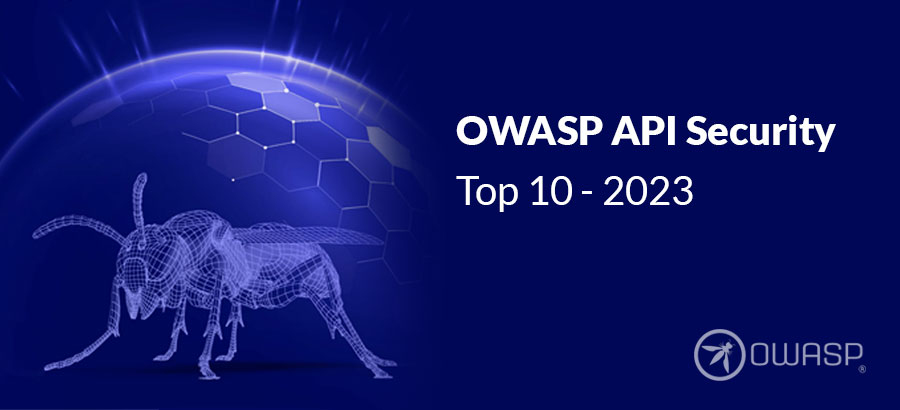
Unified API Protection: What It Is & How It Helps Secure API Landscape
Application Programming Interfaces (APIs) are the connecting tissue that enables the communication between applications, internal and external, and facilitate data exchange on a massive scale. In a world where information is the crown jewel of an organization, APIs are driving the delivery of digital services to customers and partners. While their usage is already exploding, the growing popularity of cloud-native technologies and microservices has only accelerated API adoption. Organizations of all sizes, across all sectors, are tapping the potential of APIs to improve business velocity and gain a competitive edge.
However, APIs by nature are highly visible, exposing application logic and sensitive data such as Personally Identifiable Information (PII). This made them the most-frequent attack vector exploited by cybercriminals to conduct cyberattacks and data breaches. Even the most secure APIs can be exploited by malicious actors in the form of business logic abuse. And with the ubiquitous nature of APIs, the challenge of securing the organization’s API infrastructure without hampering their usage and growth is becoming increasingly severe and critical. This is where Unified API Protection comes in.
Before we delve deep into Unified API Protection, let’s understand what are Unified APIs;
What are Unified API?
A Unified API enables the communication between multiple APIs, including ones with different backend data models. Simply put, it is an abstraction layer that aggregates APIs in the same software category, facilitating easier integration with standard endpoints, authentication, and normalized databases. Now users can view and access their resources on a single platform.
Leveraging a unified API approach improves developer experience while decreasing the amount of time needed to build API integrations in-house. It eases developers from integration hassle and helps them drive their focus toward innovative ideas. Some other benefits of unified APIs are as follows:
- Improved security: A Unified API can augment data in transit and mask and encrypt potentially sensitive data (like PII) and helps you secure your businessComplete visibility: Unified APIs enable centralize logging, helping you gain complete visibility into your API infrastructure.
- Normalized data: Unified APIs normalize data into a simple, understandable format helping you gain deep insights from your data.
- Easy discovery of domain model: Unified APIs enable the mapping of domain models across API vendors. This makes it easier for developers to understand specific APIs’ scope and potential.
- Easily create virtual webhook events: Unified APIs can create virtual webhook events through polling APIs that don’t support webhooks natively.
- Proxying requests: With a unified API approach, you can perform validation upfront and capture traffic going through all APIs.
- Standardized pagination and filtering: Unified APIs standardize the process of pagination, filtering, and sorting. You can also prevent under-fetching and over-fetching.
- Decreased expenses: A unified API handles versioning of downstream APIs to facilitate ongoing maintenance.
- API Augmentation: Unified APIs can easily support more developer preferences and programming languages.
Unified API Protection: Defend Your APIs from Security Threats
Modern organizations must guard their entire API footprint against ever-evolving security and compliance risks. They need a unified and fully integrated approach that takes care of the entire API lifecycle, securing all APIs, across all channels, environments, user groups, and use cases. The approach must provide comprehensive API protection of all managed and unmanaged APIs. This is where Unified API Protection comes in.
Unified API Protection goes beyond fragmented or incomplete API security practices. It eliminates unknown and unmitigated API security risks, autonomously discovers & creates a complete runtime inventory of all APIs, and provides native inline resolution.
Unified API protection is based on the following foundational pillars:
- Discover: You can’t protect what you don’t know exists. Unified API protection solutions must be able to know the entire risk surface by discovering the existence and location of every API under a company’s purview, even shadow APIs.
- Real-time threat detection: The tool must provide consistent, continuous API threat identification in real time. It should be able to monitor compliance and risk level, while providing advanced threat detection, by leveraging AI-driven mechanisms as well as global API threat intelligence.
- Rapid Incident Response: Finally, the tool should be able to correlate events and connect them to the source behind those attacks – users or groups. It should provide SecOps teams with comprehensive data on user activity so that they can respond with accuracy and confidence.
Here are six best practices that help you achieve these three pillars of Unified API Protection:
- Inside-out discovery: You need to know the unknown and automatically identify shadow APIs.
- Outside-in inventory: Identify all known and managed APIs and connections without their prior knowledge of existence.
- Compliance monitoring: Make sure that you are staying compliant with all the relevant regulations and standards.
- Threat detection: Scan for any malicious activity, including known attacks, unknown business logic abuse or API misuse.
- Threat prevention: Protect API data and infrastructure through real-time prevention of attacks without relying on any third-party tools.
- Continuous testing: Ensure no vulnerabilities enter the production by making API protection a part of the development phase by shifting security to the left.
Achieve Unified API Protection with AppSentinels
AppSentinels delivers comprehensive, seamless protection against unknown and known API attacks through its multi-layer defense shield. A few of its salient features, detailed below, will depict how it operates in alignment with the principles of Unified API protection:
- Real-time continuous discovery of all APIs in a company’s technology ecosystem, as and when they are deployed or modified. Additionally, the tool identifies non-superficial details like input and output parameters, data types, whether a parameter is mandatory or optional, or PII/sensitive. This enables the deepest possible visibility into all API assets and helps accurately assess the organization’s overall risk exposure.
- Run-time protection against business logic attacks via AI/ML models. These models build a deep understanding of the applicable behavior and monitor application usage, allowing detection and prevention of adversary activity, including unknown attacks on the business logic of the application. No more API blindspots.
- Positive security enforcement by triggering alerts about API’s not conforming to OpenAPI schema.
- Protection against known attacks via ng-WAF. Powered by the industry-best Core Rule Set, the platform protects against common attack techniques like SQL-Injection, Cross-Site scripting (XSS), Command and File Injection, and Server-Side Request Forgery.
- Multiple checks on APIs to provide complete insight into possible misconfigurations and vulnerabilities. The tool checks for authentication mechanisms, token use, various header fields, and cookies.
Leverage our AI Powered Multi-Layered Defence Shield to protect your APIs and applications against all unknown and known attacks. Our Intelligent Stateful API Test Platform shifts-left AI/ML learnings from the production environment to uncover business logic vulnerabilities in your application. The platform also provides SoC teams with all data required to defend against external attacks. It also delivers deep insights to developers to help them remediate security issues.
Ensure Unified API Protection with AppSentinels!





Leave a Reply